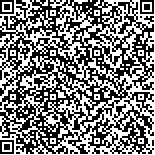下载中心
优秀审稿专家
优秀论文
相关链接
摘要

随着卫星遥感技术的发展,利用遥感反演地表温度的方法不断出现,如劈窗法、双角度法和单通道算法等。Landsat系列卫星的遥感数据是地表温度反演的重要数据之一。本文选择无锡周边区域为研究区,利用Landsat 8卫星遥感数据,对两种劈窗算法(Juan C. Jiménez-Muñoz劈窗算法和Offer Rozenstein劈窗算法)和两种单窗算法(Juan C. Jiménez-Muñoz单通道算法和覃志豪单窗算法)的地表温度反演精度进行了对比和敏感性分析。采用太湖16个浮标站的实测数据来验证了4种算法的反演精度。结果表明:两种劈窗算法的精度较高且较为接近,误差为0.7 K左右;覃志豪单窗算法和Juan C. Jiménez-Muñoz单通道算法精度较低,误差分别为1.3 K和1.4 K左右。Juan C. Jiménez-Muñoz劈窗算法对参数的敏感性最低,Juan C. Jiménez-Muñoz单通道算法次之,覃志豪单窗算法和Offer Rozenstein劈窗算法敏感性相对最高。其中Juan C. Jiménez-Muñoz单通道算法只适用于一定的水汽含量范围,有一定的局限性。
Land Surface Temperature (LST) plays an important role in energy exchange between the land surface and the atmosphere. LST is a key variable in many applications, such as land surface modeling. Many satellite-based algorithms have been proposed to retrieve LST, such as Split-Window (SW), dual-angle, and single-channel algorithms. In this study, four satellite-based LST retrieval algorithms, including two SW algorithms (Juan C. Jiménez-Muñoz and Offer Rozenstein SW algorithms) and two mono-window algorithms (Juan C. Jiménez-Muñoz and Qin Zhihao mono-window algorithms), were compared with Landsat-8 satellite data over the region around Wuxi City. The accuracy of the four algorithms was evaluated against the ground measurements from 16 floating stations over Lake Tai. The results showed that the performance of the two SW algorithms, which have an average error of 0.7 K, was better than that of the SW algorithms, which have an average error of 1.3—1.4 K, when compared with ground measurements. The sensitivity analysis of these algorithms showed that the Juan C. Jiménez-Muñoz SW algorithm was the least sensitive to key input parameters (emissivity and water vapor), whereas the Offer Rozenstein SW algorithm and the Qin Zhihao mono-window algorithm showed high sensitivity to input parameters. The limitations of these four LST retrieving algorithms were also discussed.

